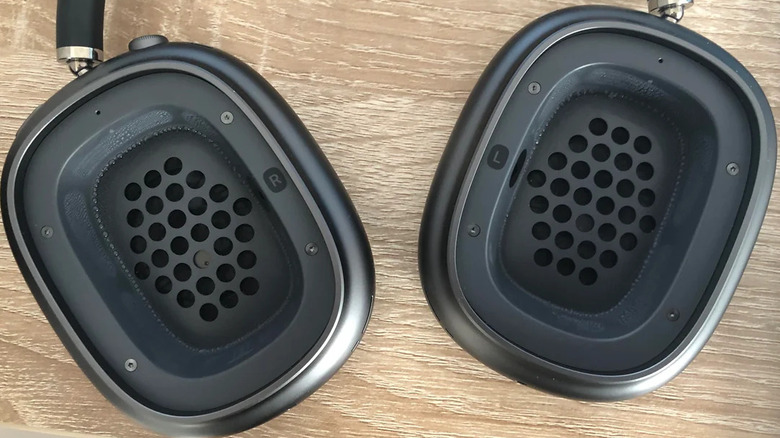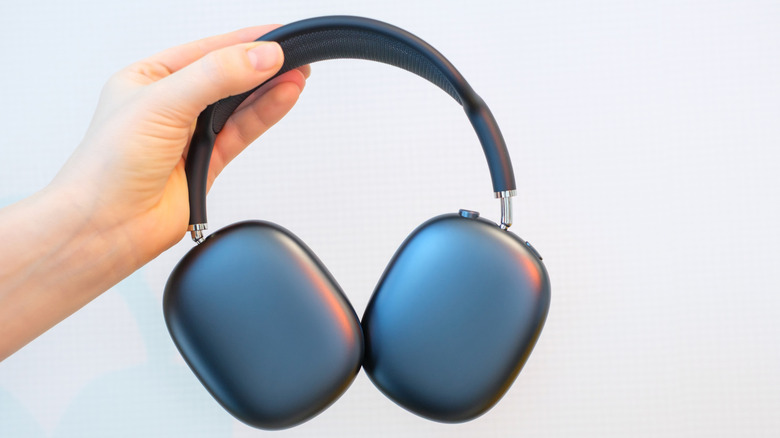What Is The Lawsuit Against Apple Over The AirPods Max Headphones?
In 2020, Apple introduced the AirPods Max as a wireless headphone that offers all the benefits of AirPods in an over-ear design. Active noise cancellation, transparency mode, and spatial audio are some of Apple's over-ear headphone features. But soon after the device was released to the public, many complaints started surfacing online about problems with moisture building up inside the ear cups. Reddit, Twitter, and Apple forums were flooded with reports claiming a buildup of condensation when the headphones were used for a long time.
On April 23, 2025, a class action lawsuit was filed against Apple in the New York Federal Court by Arthur Apicella over the condensation issue in the AirPods Max. Arthur claims that the alleged defect is causing various performance issues, which a user definitely does not expect from one of the costliest wireless headphones present in the market. The report further accuses Apple of already knowing about the defect in the AirPods Max headphones before they were made available for purchase; still, they continued to sell them without alerting buyers about it.
That said, let's learn more about the lawsuit against Apple over the AirPods Max headphones. Also, check out what to do if your Apple wireless headphones are affected by condensation.
Everything you need to know about the lawsuit against AirPods Max
AirPods Max costs around $550, which is quite expensive compared to its competitors like the Sony WH-1000XM6 or the new Nothing headphones. Despite paying the premium price, users are experiencing condensation problems in the Apple headphones, according to the lawsuit filed by Arthur Apicella. Forbes published a report in 2021 claiming that the problem is caused by the earcups' aluminum body. As it turns out, aluminum is a poor insulator, which results in the formation of heat when the headphones are used for a prolonged time. This ultimately leads to the formation of sweat or humidity, which then converts into water droplets inside the over-the-ear headphones.
Arthur, in his complaint, claims that since the AirPods Max isn't water resistant, when these droplets migrate inside the headphones, they cause issues such as constant connectivity interruption, poor audio quality, problems with charging, and even affect the active noise cancellation feature. Despite all these reports, the class lawsuit alleges that Apple has not acknowledged the issue, instead accusing users of the problem.
Addressing another lawsuit that was filed in California over the same matter, an Apple lawyer argues that problem occurs on all over-ear headphones, but they are more noticeable on the Apple device because their cups are magnetic and are removable. The lawyer also said the users who complained of condensation damaging their AirPods Max were often using the headphones while exercising or performing any other sweat-causing activity.
Plaintiff Arthur demands a jury trial on this matter and wants Apple to offer injunctive relief. Furthermore, he demands an award of compensatory, exemplary, and statutory damages for everyone who is affected by the condensation issue in their AirPods Max.
How do you fix the condensation issue on the Apple AirPods Max?
If you are experiencing any of the issues highlighted above, it's most likely because of the water droplets that have migrated inside the over-the-ear headphones. Fortunately, you can fix the problem by following the steps below:
- Remove the headbands from the drivers, and then use a cotton swab moistened with disinfecting alcohol to clean the inside of the drivers.
- Then, use a dry, lint-free cloth to gently remove any kind of moisture from the drivers. Now, you need to leave the earcups exposed in an open area for a few minutes to entirely dry out the surface.
Finally, attach the cushion and headband and start using the headphones. However, if this doesn't solve the problem you were experiencing with the headphones, you'll have to contact the Apple support team or reach out to the nearest Apple service center as a last resort.
That said, there are a few things you can do to avoid condensation in your headphones. Since the effect mainly takes place due to a certain temperature change, we would recommend you take off the headphones when you're going to experience a temperature change, like moving from an AC to a non-AC room. This will give the headphones some breathing space to acclimate to the new temperature. Next, you should also avoid wearing the headphones in humid conditions, as humidity is another prime cause of condensation. Lastly, you should also regularly give breaks to the headphones and take them off to reduce the risk of moisture formation.


